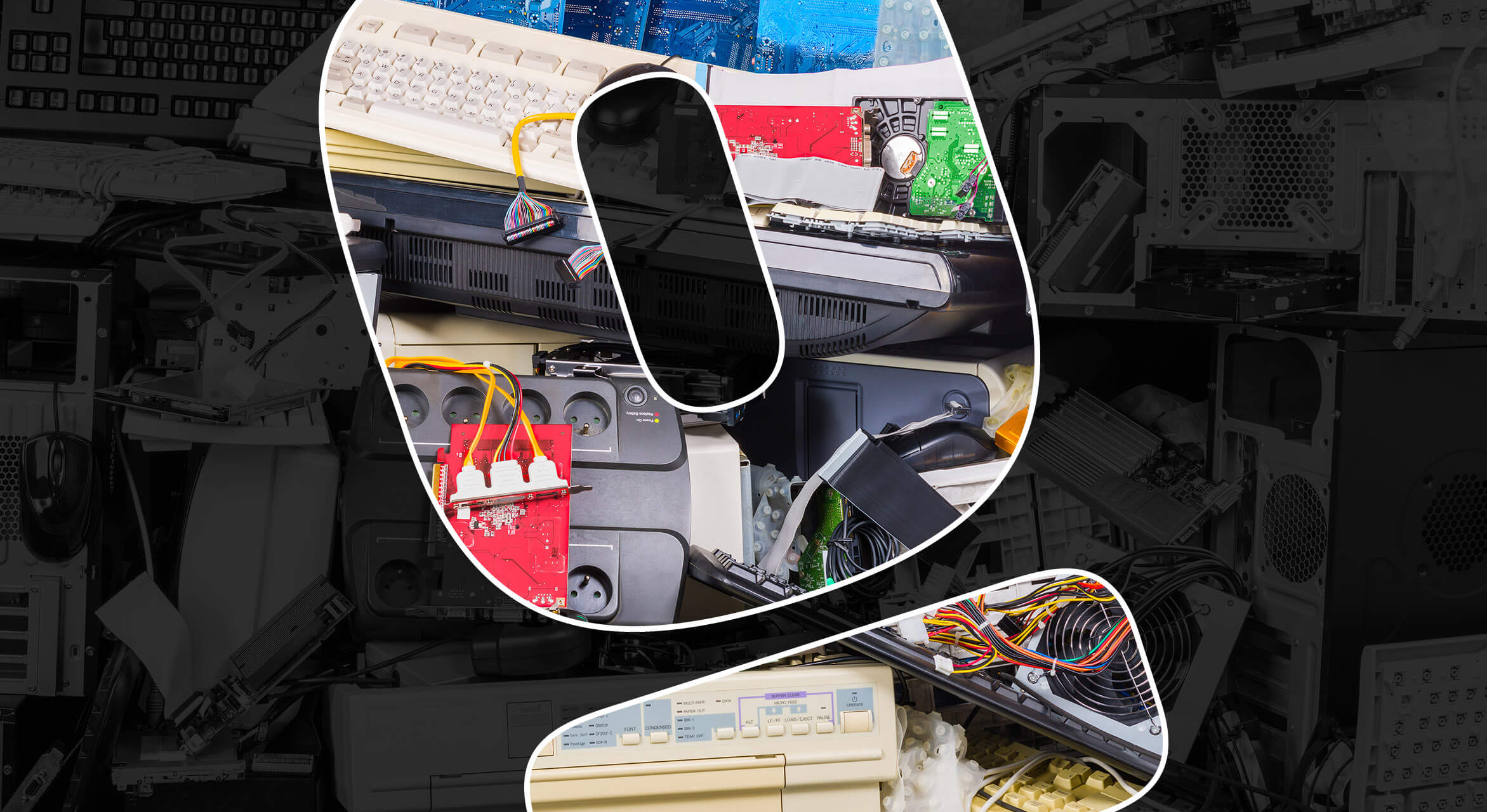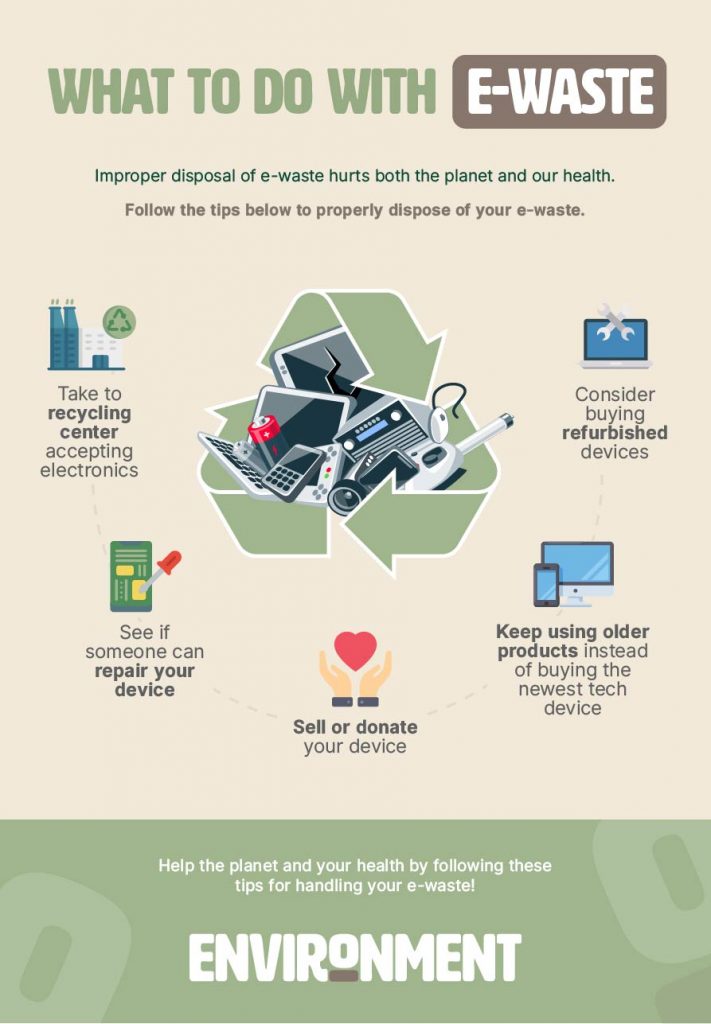
The Harmful Effects of E-Waste to Humans
We are reader-supported. When you buy through links on our site, we may earn affiliate commission.
There’s a lot of waste that ends up in landfills throughout the globe. This waste has caused harmful effects on environmental and human health. To mitigate those issues, households recycle their waste or compost food scraps. It’s a simple way to help both their health and the planet.
Still, a majority of the human waste we produce ends up in landfills regardless of the efforts some people make to keep it out of landfills. One of the products that you may not think of going to landfills is electronic waste, also known as e-waste.
The problem with e-waste has grown significantly over the past decade. Electronics are everywhere. People use electronic devices nearly every day. When those devices reach the end of their lives, it’s up to the owner what happens with them. Some people may choose to stash the device in an attic. Others may throw it away in their usual garbage disposal.
Either way, it’s a growing problem that needs to be further addressed. There are many harmful effects of e-waste to humans and the environment.
What Is E-Waste?
E-waste, or electronic waste, e-scrap or end-of-life electronics, are terms that describe any used electronic device that is at the end or is nearing the end of its purposeful life. Some of those electronics include televisions, cell phones, computers, stereos, microwaves, fans, smart lights, power strips and other devices. These are then discarded, recycled or donated.
This has become a worldwide concern for a few reasons. More consumer products are becoming digitized, including water bottles and mirrors. Additionally, companies promote planned obsolescence, which you’re likely familiar with if you own a smartphone. Companies intentionally make tech last for shorter periods of time to encourage excessive consumerism, buying more tech before the item’s life span is truly up.
Although these are waste items, the Environmental Protection Agency (EPA) defines e-waste as a subset of used electronics. They also see the value of those materials to be reused or recycled to minimize waste.
Unfortunately, many of these electronics are shipped from the United States to other developing countries for them to handle. However, they don’t have the proper equipment to handle electronics adequately and therefore, use improper practices. That then results in both environmental concerns and human health issues.
Impacts of E-Waste
Below are just some of the harmful effects of e-waste on human health.
1. Exposure to Harmful Substances
As of 2022, over 62 million metric tons of e-waste are produced annually throughout the world. By 2030, it could surpass 80 million metric tons. As previously stated, much of that electronic waste ends up in developing countries where people don’t have access to the proper equipment to handle it. Workers take whatever measures possible to get rid of that waste, including burning or recovering valuable materials that are still useful, like copper and gold.
This exposes those people to harmful substances. Many electronics contain toxic materials like nickel, zinc, lead, chromium, barium and flame retardants. These can all cause damage to the human body. Lead may get into the blood, kidneys and even the nervous system.
2. Affects Development of Unborn Children
Some of the workers in developing countries handling that waste are women who are expecting a child. When a pregnant woman is exposed to those harmful substances, it can affect the development and health of her unborn child both in and out of the womb.
Adverse health effects to the child include stillbirth, premature birth and low birth weight. Further, any exposure the woman has to lead could reduce neonatal behavioral scores, an increased risk of mental health disorders, behavioral problems and reduced cognitive abilities. It can also affect a child’s lung function, respiratory system and chronic diseases later in their lives.
3. Leads to Air and Water Pollution
Another way e-waste affects humans is through air pollution. Often, the electronics that are sent away to other countries end up in the incinerator. This process releases harmful chemicals and pollutants into the air. Humans rely on air to breathe, so when that air fills with toxins, it can affect a person’s respiratory system.
Just as those chemicals get into the air, they also enter the water. The toxins from electronics enter the groundwater, which is what feeds into streams, ponds and lakes. Humans rely on these freshwater sources, and if they ingest it, it could lead to serious health problems.
4. Causes Leaching
Leaching is when the toxic materials coming out of e-waste meld with the soil, creating a sludge-like substance that digs its way deep into soil. This type of soil pollution spreads easily and impacts more than the ground’s health. It gets into agriculture, poisoning our foods.
Additionally, the material could permeate deep enough to hit aquifers, tainting water stores. Underground freshwater storage may be the only way some communities have access to drinking water, so compromising these assets with e-waste is inexcusable.
5. Jeopardizes Electronics Workers
Health and safety isn’t always a top priority when it comes to handling e-waste. Novel 2024 research clarified the impacts of e-waste on the sector’s workers instead of focusing on the general public. The results proved formal and informal workers in this industry were more likely to obtain these ailments:
- Altered lipid metabolism
- Reproductive problems
- Thyroid hormonal imbalances
- Respiratory decline or asthma
- Hypertension
- Skin disorders
- Musculoskeletal pain
This isn’t even every health concern arising in these workers. The study calls for more in-depth analysis of the sector, because it is currently lacking. Then, solutions may arise.

How to Properly Dispose of Your E-Waste
Fortunately, there are ways you can properly dispose of your e-waste. Whenever one of your electronic devices enters the end of its life, or you no longer use it, take it to a recycling center that accepts electronic devices. Avoid disposing of them in your regular garbage.
It is essential for people to assert their interest in e-waste recycling infrastructure, otherwise it may not expand to its fullest potential. Recent reports suggest only 22.3% of e-waste is properly collected and formally recycled, despite the rise of electronics consumerism. It is ballooning five times faster than recycling can keep up.
If possible, see if someone can repair the device. Even if it isn’t up to your operational standards, someone else might find your trash as treasure. Sell it or donate it to someone who can continue to make use of it.
Additionally, reduce the amount of e-waste you produce. Keep using products that still work instead of pining after that new iPhone or newer, bigger television set. Be an environmental and human steward with your electronic devices.
Here are a few other creative solutions for dealing with e-waste with the planet in mind:
- Do a tech trade with friends and family.
- Transform an old but still operational tablet into a moving photo frame.
- Use malfunctioning devices to learn a new skill, and see if you can repair it by watching YouTube videos.
- Make an old phone with no connectivity a repurposed MP3 player.
- Use it for arts and crafts, so long as this is safe and doesn’t spread trash.
The Harmful Effects of e-Waste to Humans
The EPA is continually working on better methods of e-waste disposal. By doing your part in reducing, reusing and recycling your e-waste, you can help the EPA with its waste management efforts. Electronics are great, especially when you properly dispose of them.
This post was updated May 21, 2024, with more updated information.
Share on
Like what you read? Join other Environment.co readers!
Get the latest updates on our planet by subscribing to the Environment.co newsletter!
About the author

Jane Marsh
Starting from an early age, Jane Marsh loved all animals and became a budding environmentalist. Now, Jane works as the Editor-in-Chief of Environment.co where she covers topics related to climate policy, renewable energy, the food industry, and more.





